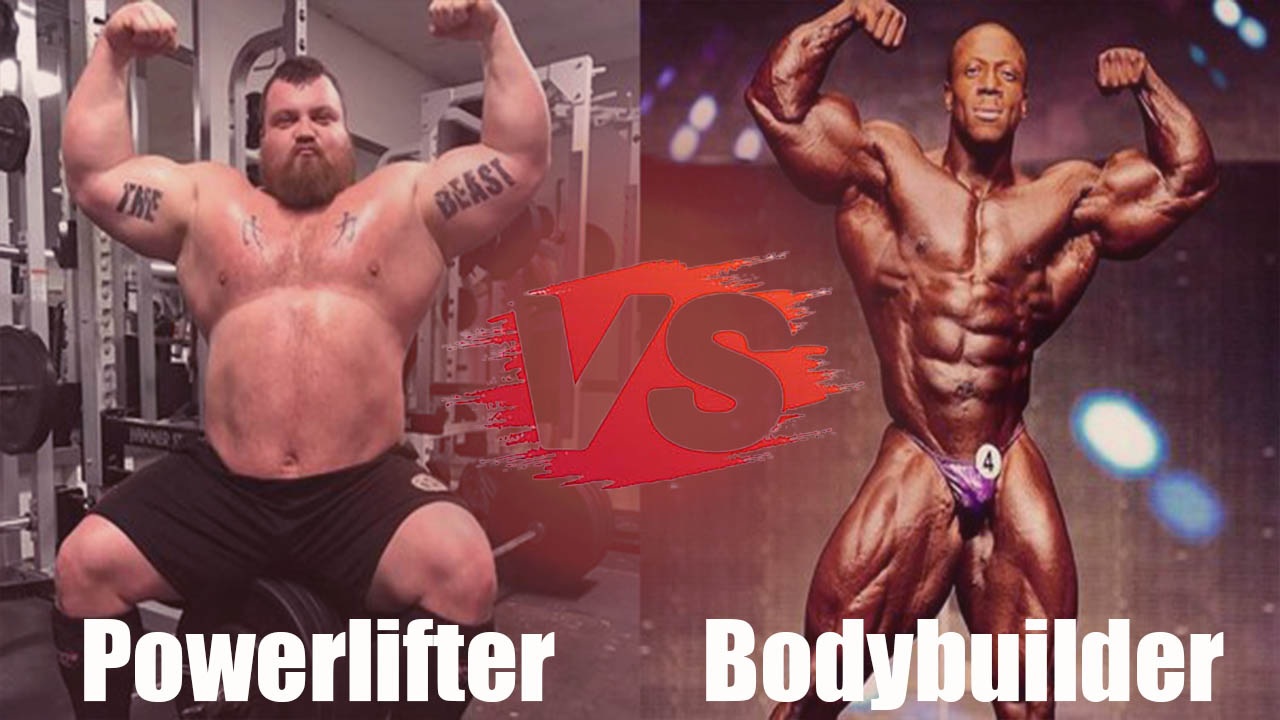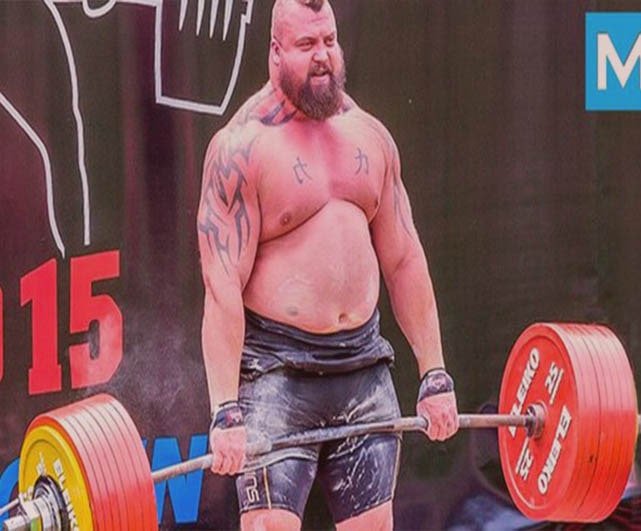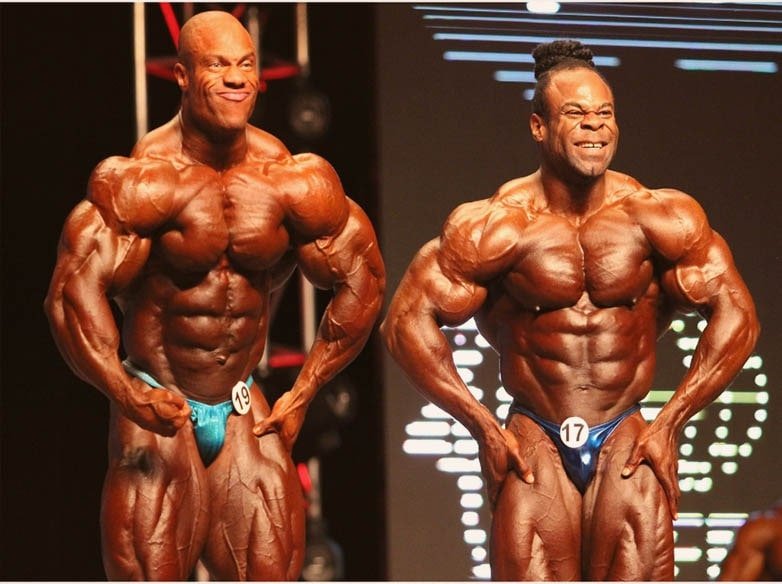Powerlifting is a strength sport that focuses on performing three main lifts: squat, bench press, and deadlift. It emphasizes raw strength and power, to lift as much weight as possible. Bodybuilding is a discipline that focuses on developing a visually impressive and aesthetically pleasing physique through muscle development and sculpting. It emphasizes muscle size, symmetry, definition, and proportion. While both powerlifting and bodybuilding involve weightlifting, they differ in training focus, goals, methods, diet, competition format, and physique development. In this article, we will explore the key differences between Powerlifter vs Bodybuilder, examining their training focus, performance goals, diet and nutrition, physical appearance, training intensity, and volume.

What is Powerlifter vs Bodybuilder?
Powerlifter
Powerlifting is a strength sport focused on three main lifts: the squat, bench press, and deadlift. Powerlifters aim to lift as much weight as possible in each of these three exercises. The competition is based on the total weight lifted across all three lifts. Powerlifters typically train with low repetitions and heavy weights to maximize their strength in these specific movements. The emphasis is on pure strength and performance, rather than aesthetics.

Bodybuilder
Bodybuilding is a sport and lifestyle focused on developing the muscles to create a visually appealing and symmetrical physique. Bodybuilders aim for well-defined and proportionate muscles, achieved through targeted resistance training and nutrition. Unlike powerlifters, bodybuilders perform a wide range of exercises, focusing on specific muscle groups to create a balanced appearance. Their training often involves moderate to high repetitions with varying levels of resistance to stimulate muscle growth and definition.

Training Focus and Goals
Powerlifting
- Emphasis on strength and power: Powerlifters prioritize increasing their strength in the squat, bench press, and deadlift.
- Training to improve performance in three main lifts: Powerlifters structure their workouts around these compound exercises, aiming to lift heavier weights over time.
- Goal: lifting as much weight as possible: Powerlifters strive to achieve personal records (PRs) in their lifts and compete against others to determine who can lift the heaviest.
Bodybuilding
- Focus on aesthetics and muscle development: Bodybuilders aim to build a visually appealing physique with well-defined muscles.
- Training to build symmetrical and well-defined muscles: Bodybuilders incorporate various exercises to target specific muscle groups, emphasizing creating balanced and proportionate muscle development.
- Goal: achieving a well-sculpted physique: Bodybuilders work towards developing muscle size, definition, and proportion, with the ultimate goal of showcasing their physique on stage.
Training Methods and Techniques
Powerlifting
- Heavy compound lifts with low reps: Powerlifters typically perform exercises with heavy weights and low repetitions to build maximal strength.
- Training with high intensity and heavy weights: Powerlifters aim to push their limits by lifting close to their maximum capacity, focusing on building raw strength.
- Incorporation of assistance exercises to target specific muscle groups: While the main lifts take precedence, powerlifters may include assistance exercises to strengthen weak points and improve overall performance.
Bodybuilding
- Higher volume training with moderate weights: Bodybuilders often perform exercises with moderate weights and higher repetitions to induce muscle hypertrophy.
- Use of isolation exercises to target specific muscles: Bodybuilders incorporate isolation exercises to focus on individual muscles and achieve better muscle definition.
- Incorporation of various techniques: Bodybuilders may utilize techniques such as supersets, drop sets, and time under tension to intensify their workouts and stimulate muscle growth.
Diet and Nutrition
Powerlifting
- High-calorie intake to support strength and muscle gain: Powerlifters require a surplus of calories to fuel their intense training sessions and facilitate muscle growth.
- Focus on protein consumption for muscle repair and growth: Adequate protein intake is crucial for powerlifters to support muscle recovery and build strength.
- Less emphasis on strict dietary restrictions or specific macronutrient ratios: Powerlifters prioritize meeting their caloric and protein needs, but they may have more flexibility in their overall diet composition.
Bodybuilding
- Precision in calorie intake and macronutrient ratios: Bodybuilders meticulously track their caloric intake and macronutrient ratios to achieve specific body composition goals.
- Higher protein intake for muscle development and recovery: Bodybuilders consume significant protein to promote muscle growth, repair, and maintenance.
- Periodic dieting phases to achieve low body fat levels and enhance muscle definition: Bodybuilders often go through cutting phases to reduce body fat percentages and reveal the muscle definition they have built.
Competition Format and Judging Criteria
Powerlifting
- Competitors perform three lifts: squat, bench press, and deadlift: Powerlifting competitions revolve around these three main lifts.
- Scoring based on the heaviest completed lifts: Competitors are ranked based on the total weight lifted across the three lifts.
- Judged by strength and technique rather than physical appearance: Powerlifting competitions focus on evaluating the lifting performance and technique rather than aesthetic qualities.
Bodybuilding
- Competitors showcase their physique through mandatory poses: Bodybuilders display their physique on stage, highlighting muscle development and symmetry through specific poses.
- Judging based on muscle size, symmetry, definition, and overall presentation: Judges assess the competitors’ muscle size, symmetry, definition, and overall stage presence.
- Presentation, posing, and stage presence play a significant role in scoring: Bodybuilders are evaluated not only on their physique but also on their ability to present and showcase their bodies effectively.
Physique and Body Composition
Powerlifting
- Athletes have a broader and bulkier appearance: Powerlifters often carry more overall body mass, including both muscle and some degree of body fat.
- Focus on developing overall strength rather than specific muscle aesthetics: Powerlifters prioritize functional strength and may emphasize achieving specific muscle aesthetics less.
- Higher body fat percentages are common among powerlifters: Given the focus on strength, powerlifters may have higher body fat percentages to support strength gains.
Bodybuilding
- Athletes aim for a highly defined and proportionate physique: Bodybuilders strive to create visually appealing and harmonious muscle development.
- Emphasis on low body fat levels to enhance muscle visibility: Bodybuilders work to reduce body fat percentages to reveal muscle definition and achieve a more chiseled appearance.
- Striations and muscle separation are desired aesthetic qualities: Bodybuilders aim for visible muscle striations and clear separation between muscle groups to enhance their overall physique.
Differences between Powerlifter vs Bodybuilder
Training Focus:
- Powerlifters prioritize strength development in the three competition lifts (squat, bench press, deadlift).
- Bodybuilders focus on hypertrophy (muscle growth) and sculpting their physique, often incorporating a broader range of exercises.
Repetitions and Weight:
- Powerlifters typically train with low repetitions (1-5 reps) and heavy weights to improve strength.
- Bodybuilders use higher repetitions (8-12 reps) with moderate weights to stimulate muscle growth and promote muscle definition.
Nutrition:
- Powerlifters often follow high-calorie diets to support their strength gains and recovery.
- Bodybuilders adhere to strict nutrition plans, carefully balancing macronutrients to promote muscle growth and minimize body fat.
Competition:
- Powerlifters compete based on the total weight lifted in the three main lifts.
- Bodybuilders are judged on their muscle size, symmetry, and overall aesthetics during competitions.
Similarities between Powerlifter and Bodybuilder
Training Dedication:
- Both powerlifters and bodybuilders require dedicated training routines and commitment to achieve their respective goals.
Resistance Training:
- Both engage in resistance training as the primary mode of exercise to reach their objectives.
Lifestyle:
- Powerlifters and bodybuilders often lead disciplined lifestyles, prioritizing their training, diet, and recovery.
FAQ About Powerlifter vs Bodybuilder
Can a powerlifter also be a bodybuilder, or vice versa?
While it’s challenging to excel simultaneously in both sports due to the differing training methods and goals, some individuals may incorporate aspects of both powerlifting and bodybuilding in their routines. These individuals are sometimes referred to as “power builders.”
Which sport requires more overall strength?
Powerlifting requires a higher level of overall strength, as it focuses on lifting maximal weight in three major compound lifts. Bodybuilding, while still demanding strength, places greater emphasis on muscle size, symmetry, and aesthetics.
Can bodybuilders benefit from powerlifting training, and vice versa?
Yes, there can be some cross-benefits. Bodybuilders can benefit from incorporating powerlifting techniques to increase their strength and overcome plateaus in muscle development. Powerlifters may also find bodybuilding exercises helpful to address muscle imbalances and support overall joint health.
Is one sport riskier in terms of injuries?
Both powerlifting and bodybuilding carry certain injury risks. Powerlifters are more prone to acute injuries due to heavy lifting, while bodybuilders may face overuse injuries from frequent and repetitive movements targeting specific muscles.
Can women participate in powerlifting and bodybuilding?
Absolutely! Both powerlifting and bodybuilding are open to women, and many female athletes excel in these sports, showcasing incredible strength and physique.
Conclusion
Differences between Powerlifter vs Bodybuilder: Powerlifting emphasizes strength and power, focusing on the three main lifts, while bodybuilding emphasizes aesthetics, muscle development, and symmetry. Powerlifting provides a focus on pure strength and performance, while bodybuilding offers the opportunity for sculpting an aesthetically pleasing physique. Individuals should consider their personal goals, preferences, and motivations when deciding between powerlifting and bodybuilding, as both have their own merits and can lead to fulfilling experiences in the world of fitness and strength sports.